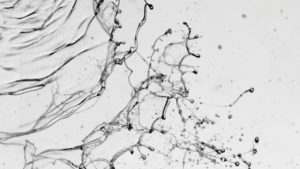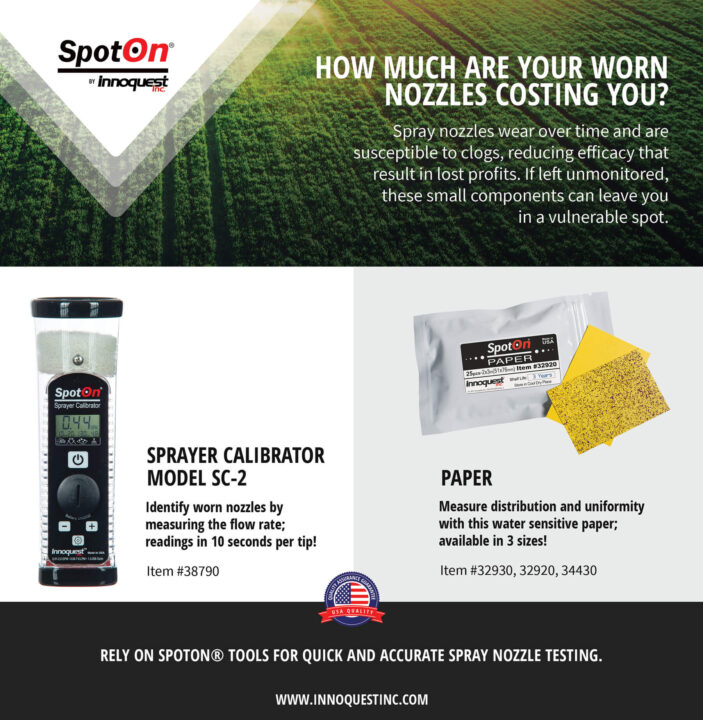Adjuvants Gain ‘Cred’ in Dicamba Era
They were supposed to have gone away long ago.
But the prediction, like Y2K, was all wrong, and here we are in 2020, discussing how adjuvants are providing one of the few bright spots of growth in the agrochemical input space.
Johnnie Roberts, long-time Director of Formulation Development and Technical Support with Helena, puts it into perspective: “In the mid-‘70s, there were only three pesticide labels (atrazine, paraquat, and MSMA) that recommended adjuvants. Today there are more than 1,000.”
Roberts started with the Collierville, TN-based ag input and services supplier in 1977 and easily recalls the early days of the adjuvant business; perhaps few companies have a richer history in this area than Helena. “They were curiosities in our product line back then, before the advent of over-the-top herbicides that drove the need for them,” he tells CropLife in a recent interview. “The direction was going to be, build (adjuvants) in. That’s what everyone thought would happen. That’s the trouble with predicting the future: it lasts a long, long time.”
As use rates of pesticides have dropped dramatically per acre, and formulations have become more concentrated, there is less room for the adjuvant to be built in. “That problem has gotten really pronounced in the last 10 years,” Roberts says. High application costs have also incentivized growers to use low spray volumes, thereby causing aggravation with driftable fines and compatibility – factors adjuvants are used to offset.
“I think the thing that’s given success in this area of adjuvants, is having such a direct input from the grower and what their needs are,” he says, explaining that ideas and suggestions from Helena staff and customers out in the field carry serious weight in the company’s product development process.
It’s simplicity that the grower and dealer are after, but the rapid adoption of technologies like the dicamba-resistant Xtend system, has made their respective jobs that much more complex. “One of the ways to reduce complexity, obviously, is to build multi-functions into one. That’s the direction the industry is heading, so that the grower doesn’t have to add three adjuvants to address variables.”
-

Katie Miesse, Helena
Helena sought to answer this need, explains Adjuvant Brand Manager Katie Miesse, with a new adjuvant for the 2020 season, Oculus Maxx, approved for use as a DRA with XtendiMax, Tavium, and Engenia, as well as a tank-mix partner with Enlist Duo and Enlist One. Oculus Maxx is poised to become the company’s top adjuvant for use with the systems thanks to its all-in-one DRA, herbicide activator, and water conditioner components that also offer flexibility for the grower to tank-mix with other partners such as glyphosate.
“Unfortunately, adjuvants have become an afterthought for growers and dealers, and they need to be a forethought,” Miesse adds. “The adjuvant market is expected to increase 3 to 5 percent over the next 10 years. With that projected growth, it’s not going to be about jumping one or two hurdles, it’s going to be about jumping multiples hurdles. Staying connected to our guys in the field, having great relationships with our suppliers and vendors – that is our chief focus and our commitment in doing the best we can.”
Gaining Cred
Adding functionality to adjuvants has also been a top priority for Waukegan, IL-based Precision Laboratories.
“It seems like we jumped into tank-mixing with dicamba pretty quickly, and many of those tank-mix partners are oil soluble and need help from an oil-based adjuvant,” Jim Reiss, Precision Laboratories, points out. “We’re looking at ways to build additional functionality into those formulations – instead of just being a premix water-conditioning agent and DRA, in the future it may have other attributes, too,” he says.
Adjuvants, years ago, were commonly perceived as “snake-oil” products, and their manufacturers’ reputations suffered correspondingly. With the rise of dicamba-resistant technologies, their credibility has elevated, Reiss observes. “Now people realize that if nothing else, it’s a great testimonial, especially in the DRA category, as to what actually works and what doesn’t work. It points to the science behind matching crop protection formulations with certain adjuvants and nozzles to optimize the entire spray process.”
Many adjuvant players are preparing for the long-awaited commercial roll-out of Corteva Agrisciences’ Enlist weed control system this season. Precision Laboratories’ legacy Border Xtra 8L activator and drift retardant, which is based on guar and ammonium sulfate, lends itself well to 2,4-D chemistry, Reiss says.
“The cool thing about Enlist One and Enlist Duo (unlike XtendiMax and Engenia) is that we can use ammonium sulfate. We’re going to continue to see the lifecycle of Border Xtra 8L technology stretch out because of that,” he adds.
According to WinField United’s testing, says Ryan Wolf, Agronomy Services Manager, the drift reduction elements baked into the Enlist formulation aren’t robust enough to handle the addition of tank-mix partners.
“Say you use Enlist One and add Roundup as well as a volunteer corn control product; all the sudden you have more drift, because the DRA is just helping with the 2,4-D and not all the other parts in that tank mix,” Wolf says, continuing, “We are seeing a benefit from adding (WinField United’s) InterLock into that tank mix.”
InterLock, while on the approved tank-mix list for both Enlist One and Enlist Duo, must be used along with an approved DRA in a tank-mix with XtendiMax or Engenia.
Bag Breakup
Extensive new research from WinField United has found that InterLock, tank-mixed with new dicamba formulations and the other required additives, has the unique ability to stop bags from forming as crosswinds hit the spray sheet coming out of the nozzle, thereby dramatically cutting the potential for drift.
-

Example of a spray pattern using an adjuvant. Photo credit: WinField United
It’s what the company’s researchers have dubbed “the bag breakup phenomenon.”
Under normal EPA testing conditions using a wind tunnel, as Wolf explains, the wind blows parallel with the nozzle. In the real world, this simply isn’t the case. Since DRAs added to tank mixes are mostly polymer-based, they create larger droplets, and when crosswinds move across the nozzle, bags form.
“You can see in slow-motion videos that the edge of spray sheets actually forms a bag, or balloon, up in that wind. When that bubble forms, it pops, and spreads a bunch of small droplets in the environment, creating more drift than you started out with,” Wolf says. Yet adding oil-based InterLock in the tank has shown the spray sheets to stay uniform, a characteristic which sets the product apart from competitors, he explains.
The company is recommending 2 oz./acre (vs. the normal rate of 4 oz./acre) of InterLock be used in dicamba formulations along with an approved DRA, enough to break up the bags. Including both in the spray tank, along with a water conditioner, reduces driftable fines by 60%, WinField United researchers concluded after 800 hours of testing conducted over a six-month period.
Yet, adjuvants are not only there to control drift, Wolf reminds. “Adjuvants play a very important part in getting that extra 10-, 15-, 20-percent control in a lot of these weeds. It’s really the bridge from the herbicide itself to actually getting the herbicide on and in and through the plant. That’s what we really want to do.”






